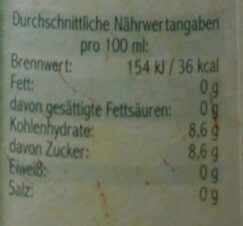Garten-Limonade Schwarze Johannisbeere - Bad Brambacher - 0,5 l
This product page is not complete. You can help to complete it by editing it and adding more data from the photos we have, or by taking more photos using the app for Android or iPhone/iPad. Thank you!
×
Barcode: 4017434003480 (EAN / EAN-13)
Common name: Limonade Schwarze Johannisbeere, mit natürlichem Mineralwasser und 10% Fruchtgehalt
Quantity: 0,5 l
Packaging: Glass
Brands: Bad Brambacher
Categories: Plant-based foods and beverages, Beverages, Plant-based beverages, Carbonated drinks, Fruit-based beverages, Sodas, Fruit sodas, Lemonade, Sweetened beverages
Link to the product page on the official site of the producer: https://www.bad-brambacher.de/garten-lim...
Stores: Edeka
Countries where sold: Germany
Matching with your preferences
Environment
Packaging
Transportation
Report a problem
Data sources
Product added on by citrullus28
Last edit of product page on by roboto-app.
Product page also edited by f66, foofighter94, kiliweb, yuka.sY2b0xO6T85zoF3NwEKvlkVkc_fj_TThMj_RsBWU3PeTdaOxUItdw4LXIas.










